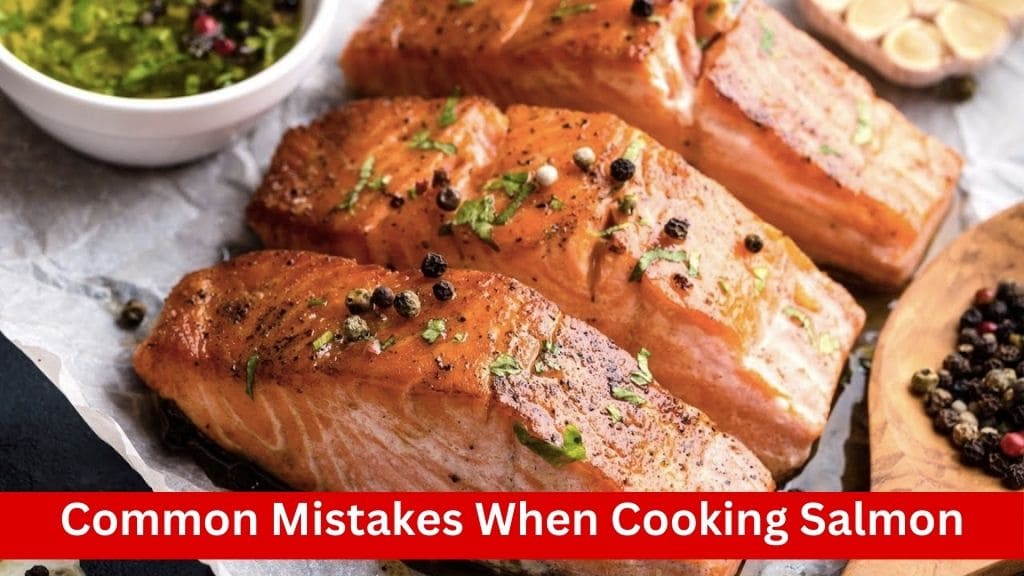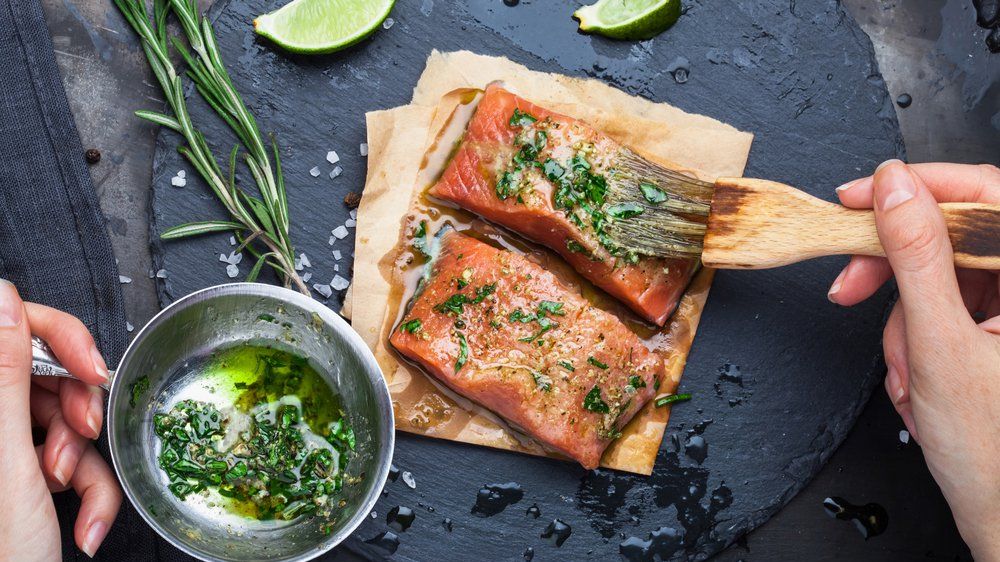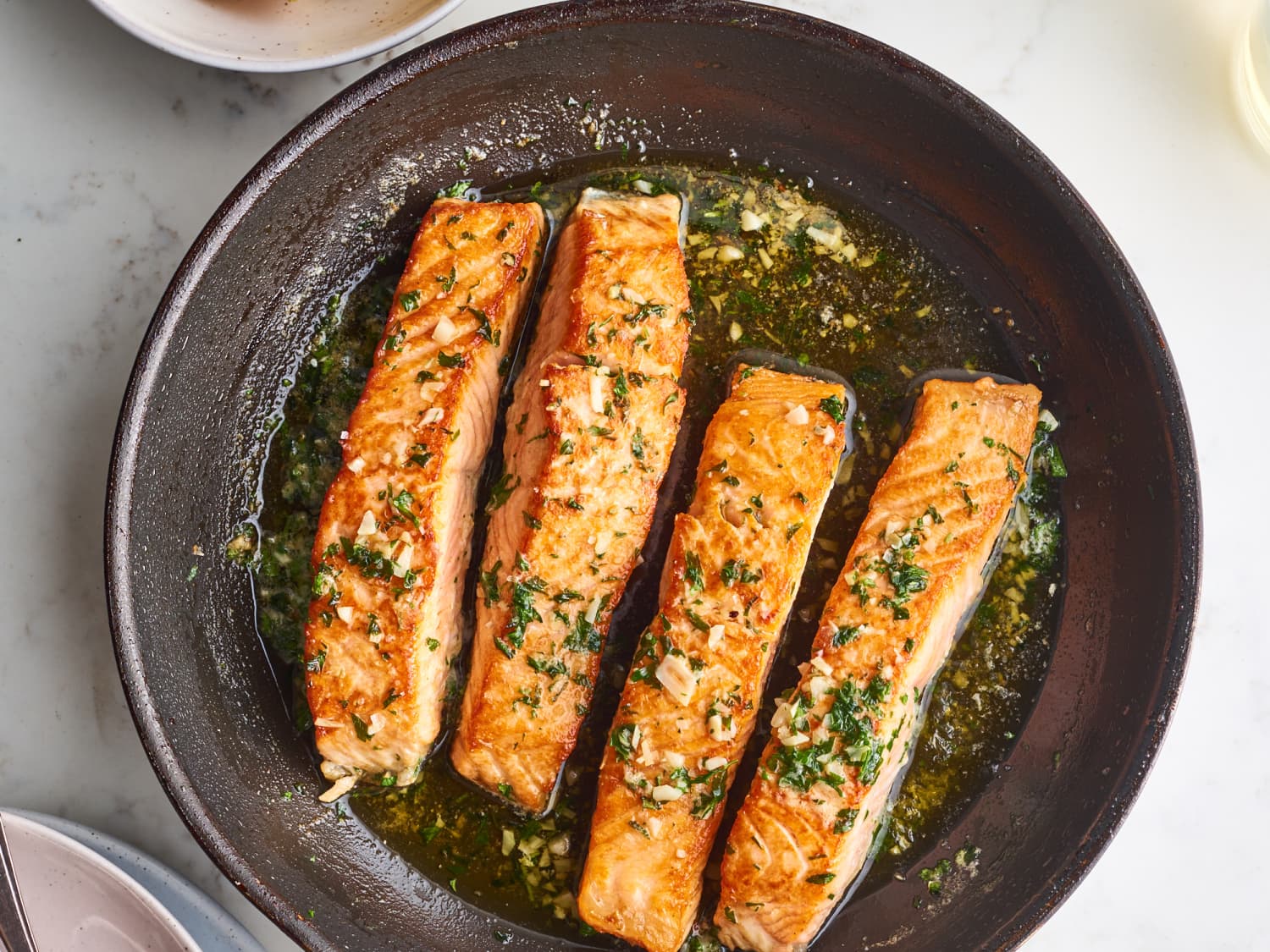Salmon is a versatile and delicious fish enjoyed by many around the world. However, despite its popularity, there are several common mistakes that home cooks often make when preparing salmon. In this comprehensive guide, we’ll explore these mistakes in detail and provide tips on how to avoid them to ensure that your salmon dishes turn out perfectly every time.
Salmon is a prized seafood known for its delicate flavor and versatility in the kitchen. Whether you’re grilling, baking, or pan-searing, cooking salmon can be a rewarding experience. However, even the most seasoned cooks can fall victim to common mistakes that can impact the taste and texture of this beloved fish. In this blog post, we’ll delve into some of the most prevalent mistakes made when cooking salmon and offer practical solutions to help you achieve culinary success.
Mistake 1: Choosing the Wrong Type of Salmon
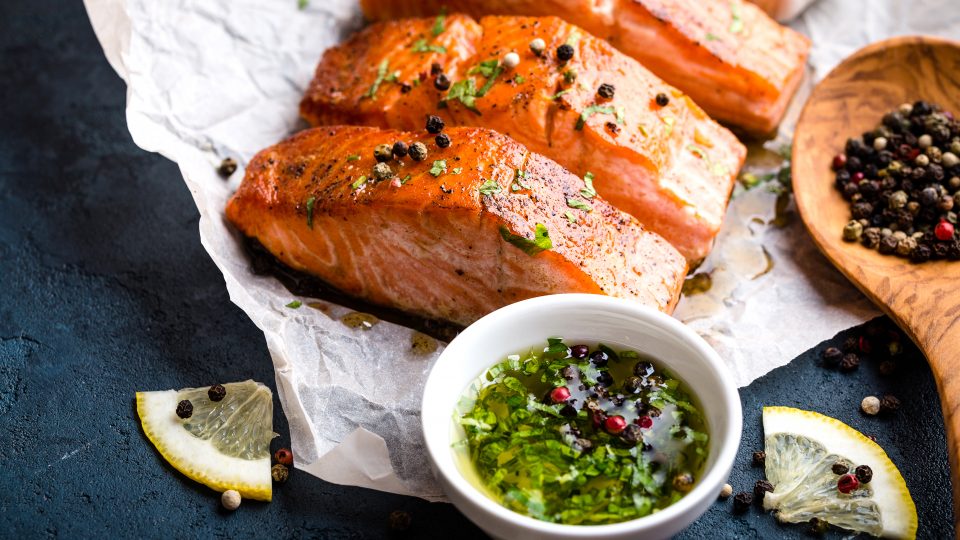
Description: One of the first mistakes people make when cooking salmon is failing to select the right type of fish for their dish.
Explanation:
Salmon is not a one-size-fits-all fish; rather, it encompasses a variety of species, each with its own distinct characteristics in terms of flavor, texture, and fat content. Understanding the differences between these species is crucial for achieving the desired outcome in your dish.
Varieties of Salmon:
- Atlantic Salmon: Atlantic salmon is one of the most commonly available types of salmon in the United States and Europe. It has a mild flavor and a higher fat content compared to other species, making it ideal for grilling, baking, or broiling.
- Pacific Salmon: Pacific salmon includes several species such as Chinook (King), Sockeye, Coho, Pink, and Chum. Each of these species has its own unique flavor profile and texture.
- Chinook (King) Salmon: Known for its rich, buttery flavor and high fat content, Chinook salmon is prized for its luxurious taste and melt-in-your-mouth texture. It is best enjoyed simply grilled or pan-seared to allow its natural flavors to shine.
- Sockeye Salmon: Sockeye salmon, also known as red salmon, has a vibrant red flesh and a robust, slightly stronger flavor compared to other species. It is well-suited for smoking, grilling, or baking.
- Coho Salmon: Coho salmon has a milder flavor and firmer texture than Chinook and Sockeye salmon. It is versatile and can be cooked using various methods, including grilling, roasting, or pan-searing.
- Pink Salmon: Pink salmon is the smallest and most abundant species of Pacific salmon. It has a delicate flavor and is often canned or used in recipes that call for flaked salmon.
- Chum Salmon: Chum salmon, also known as dog salmon, has a lower fat content and a firmer texture compared to other species. It is often used in canned salmon products or smoked.
Choosing the Right Salmon for Your Dish:
When selecting salmon for your recipe, consider the following factors:
- Flavor Preference: Determine whether you prefer a mild, buttery flavor (e.g., Atlantic or Chinook salmon) or a richer, more pronounced taste (e.g., Sockeye or Coho salmon).
- Cooking Method: Certain species of salmon are better suited for specific cooking methods. For example, fatty salmon varieties like Chinook or Atlantic are excellent for grilling or broiling, while leaner species like Chum are better suited for smoking or canning.
- Availability: Depending on your location and the time of year, certain types of salmon may be more readily available than others. Consider what is in season and choose accordingly to ensure freshness and quality.
Mistake 2: Not Properly Seasoning the Salmon

Description: Another common mistake when cooking salmon is failing to properly season the fish before cooking, resulting in bland or unbalanced flavors.
Explanation:
Proper seasoning is essential for enhancing the natural flavors of salmon and creating a delicious culinary experience. However, many home cooks either under-season or over-season their salmon, leading to disappointing results. Let’s explore the importance of seasoning and how to do it correctly.
Importance of Seasoning:
Seasoning serves several purposes when cooking salmon:
- Enhances Flavor: Salt, pepper, herbs, and spices help to amplify the natural flavors of the salmon, making each bite more enjoyable.
- Balances Taste: Proper seasoning ensures a harmonious balance of flavors, preventing the fish from tasting overly salty or bland.
- Adds Complexity: Using a variety of seasonings can add depth and complexity to the dish, elevating it from ordinary to extraordinary.
Tips for Properly Seasoning Salmon:
- Use Salt and Pepper: Salt and pepper are the building blocks of seasoning and should be applied generously to both sides of the salmon fillet. This helps to bring out the natural flavors of the fish and create a balanced taste.
- Experiment with Herbs and Spices: Get creative with your seasoning by experimenting with herbs and spices such as garlic, dill, lemon zest, paprika, or cayenne pepper. These ingredients can add depth, complexity, and a burst of flavor to your salmon dish.
- Consider Marinating: Marinating salmon before cooking is a great way to infuse it with flavor and tenderize the fish. You can use a simple marinade of olive oil, lemon juice, garlic, and herbs, or try more complex flavor combinations based on your preferences.
- Season Both Sides: Be sure to season both sides of the salmon fillet evenly to ensure that every bite is well-seasoned. Use your hands to gently press the seasonings into the fish for better adherence.
- Adjust to Taste: Taste a small piece of the seasoned salmon before cooking to ensure that the seasoning is to your liking. Adjust as needed by adding more salt, pepper, or other seasonings until you achieve the desired flavor.
- Consider the Cooking Method: Keep in mind that some cooking methods may require more or less seasoning. For example, grilling or broiling can intensify flavors, so you may need to season more generously compared to poaching or steaming.
Mistake 3: Overcooking the Salmon
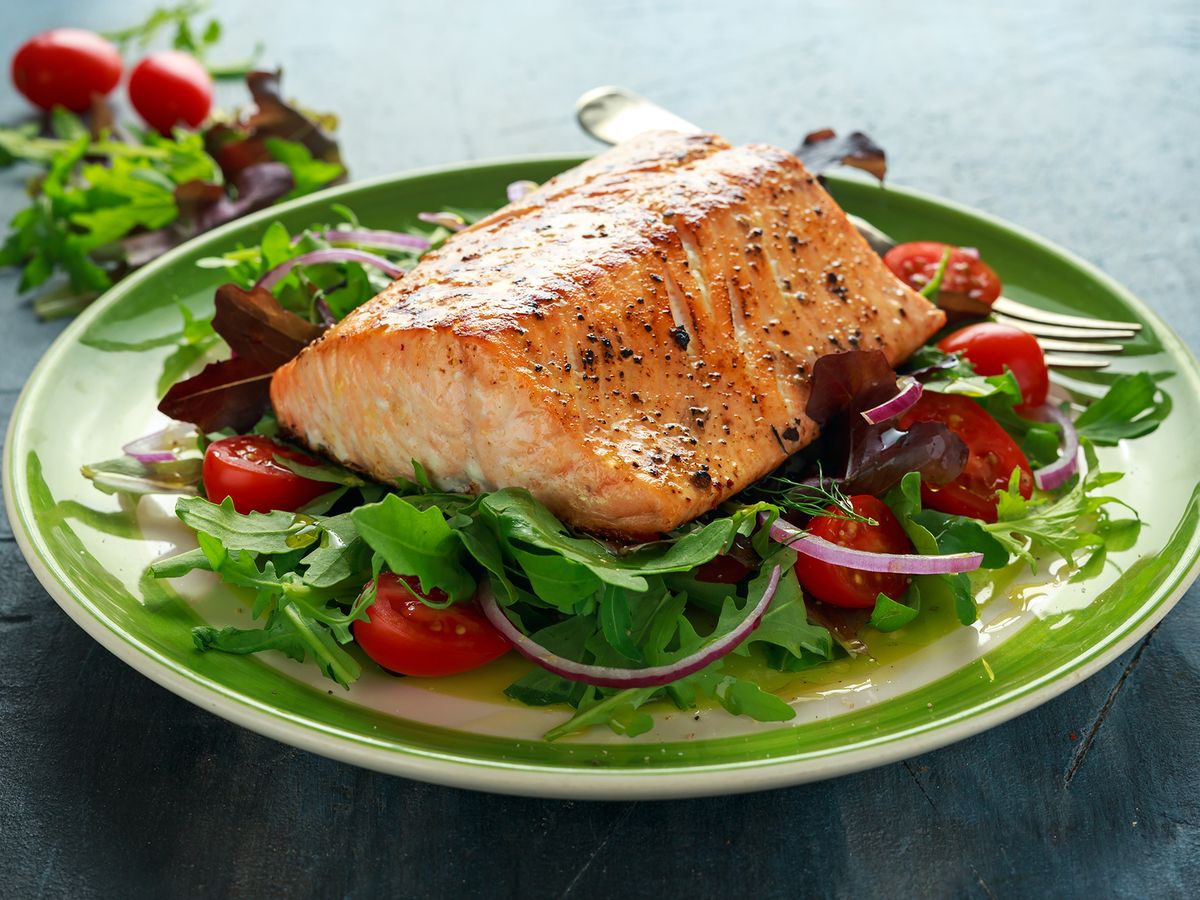
Description: Overcooking salmon is a common mistake that can result in a dry, tough, and flavorless fish.
Explanation:
Salmon is a delicate fish that cooks quickly, and overcooking it can lead to undesirable consequences. When salmon is cooked for too long or at too high a temperature, its proteins denature, causing it to become dry and flaky. Additionally, overcooked salmon can lose its natural flavor and succulence, resulting in a less enjoyable dining experience. Let’s delve deeper into why overcooking occurs and how to prevent it.
Reasons for Overcooking:
- Incorrect Cooking Time: Many people mistakenly believe that salmon needs to be cooked until it is completely opaque throughout. However, salmon continues to cook after it is removed from the heat source due to residual heat, known as carryover cooking. Therefore, if salmon is cooked until opaque, it will likely be overcooked by the time it is served.
- High Heat: Cooking salmon at too high a temperature can cause it to cook too quickly on the outside while remaining undercooked on the inside. This can lead to uneven cooking and overcooking, especially if the salmon is thick or if the heat is not properly regulated.
- Lack of Resting Time: Allowing salmon to rest after cooking is essential for ensuring that it retains its moisture and tenderness. Skipping this step can result in the juices being released prematurely, leaving the salmon dry and lacking in flavor.
Tips to Prevent Overcooking:
- Use a Meat Thermometer: The most reliable way to determine the doneness of salmon is by using a meat thermometer. Insert the thermometer into the thickest part of the salmon fillet, and remove it from the heat source when it reaches an internal temperature of 145°F (63°C). This ensures that the salmon is cooked through but still moist and tender.
- Cook at a Lower Temperature: Cooking salmon at a lower temperature, such as 325°F to 350°F (163°C to 177°C), allows for more even cooking and reduces the risk of overcooking. This slower cooking method gives the salmon time to cook through without drying out.
- Monitor Closely: Keep a close eye on the salmon while it is cooking to prevent it from overcooking. Check for doneness a few minutes before the estimated cooking time to avoid cooking it past the desired level of doneness.
- Allow for Resting Time: After removing the salmon from the heat source, let it rest for a few minutes before serving. This allows the juices to redistribute throughout the fish, resulting in a juicier and more flavorful final product.
Mistake 4: Neglecting the Skin
Description: Neglecting to utilize the skin of the salmon is a common oversight that can result in missed opportunities for flavor and texture enhancement.
Explanation:
The skin of the salmon is often discarded or ignored by home cooks, but it can actually be a valuable asset in cooking. Salmon skin is rich in flavor, contains healthy fats, and crisps up beautifully when cooked properly. Neglecting the skin means missing out on these benefits and can result in a less enjoyable dining experience. Let’s explore why the skin is important and how to make the most of it when cooking salmon.
Benefits of Using Salmon Skin:
- Flavor Enhancement: The skin of the salmon is packed with flavor, especially when crisped up during cooking. It adds a deliciously savory and slightly crispy texture to the fish, enhancing its overall taste.
- Protective Barrier: Leaving the skin on the salmon fillet acts as a protective barrier during cooking, helping to retain moisture and prevent the fish from drying out. This results in a juicier and more tender final product.
- Nutritional Value: Salmon skin is rich in omega-3 fatty acids, which are beneficial for heart health and brain function. By consuming the skin, you can reap the nutritional benefits of these healthy fats.
Tips for Using Salmon Skin:
- Crisp the Skin: When cooking salmon, be sure to cook it skin-side down to allow the skin to crisp up nicely. This can be done by searing the salmon in a hot pan with a small amount of oil or by grilling it skin-side down on a barbecue.
- Season the Skin: Seasoning the skin of the salmon with salt, pepper, and any desired herbs or spices can enhance its flavor even further. Consider adding a sprinkle of garlic powder, paprika, or lemon zest for added depth of flavor.
- Serve Skin-Side Up: When serving the salmon, present it with the crispy skin facing upwards to showcase its golden-brown color and crispy texture. This not only adds visual appeal to the dish but also allows diners to enjoy the deliciously crispy skin.
- Experiment with Recipes: Don’t be afraid to get creative with your salmon skin recipes. Crispy salmon skin can be used as a garnish for salads, soups, or pasta dishes, or enjoyed on its own as a tasty snack.
Mistake 5: Using High Heat
Description: Cooking salmon at excessively high temperatures is a common mistake that can lead to uneven cooking, overcooking, and a less-than-ideal texture.
Explanation:
Salmon is a delicate fish that requires gentle cooking to preserve its tender texture and succulent flavor. Using high heat can cause the outer layers of the fish to cook too quickly, resulting in a dry exterior and undercooked interior. Additionally, high heat can cause the fish to stick to the cooking surface, making it difficult to flip and resulting in a less appealing presentation. Let’s delve deeper into why using high heat is problematic and how to cook salmon properly to achieve optimal results.
Issues with High Heat Cooking:
- Uneven Cooking: High heat can cause the exterior of the salmon to cook too quickly while the interior remains undercooked. This results in uneven cooking and a less-than-ideal texture.
- Overcooking: Cooking salmon at high temperatures increases the risk of overcooking, as it leaves less room for error in timing. Overcooked salmon becomes dry, tough, and lacking in flavor.
- Sticking to the Pan: Salmon has a tendency to stick to the cooking surface when exposed to high heat, especially if the skin is left on. This can make it difficult to flip the fish without it falling apart and can result in a less attractive presentation.
Tips for Proper Cooking Temperature:
- Medium Heat: Opt for medium heat when cooking salmon to ensure gentle and even cooking. This allows the fish to cook through gradually without drying out or becoming overcooked.
- Preheat the Pan: Preheat the cooking surface (whether it’s a skillet, grill, or oven) before adding the salmon to ensure even cooking and prevent sticking.
- Oil the Surface: Brush the cooking surface with a thin layer of oil before adding the salmon to prevent sticking and promote a crispy exterior.
- Use a Meat Thermometer: To ensure that the salmon is cooked to perfection, use a meat thermometer to check for doneness. Remove the salmon from the heat source when it reaches an internal temperature of 145°F (63°C).
Cooking Methods:
- Pan-Searing: Heat a skillet over medium heat and add a small amount of oil. Place the salmon skin-side down in the pan and cook for a few minutes on each side until golden brown and cooked through.
- Grilling: Preheat the grill to medium heat and lightly oil the grates. Place the salmon skin-side down on the grill and cook for several minutes on each side until charred and cooked through.
- Baking: Preheat the oven to 375°F (190°C) and place the salmon on a parchment-lined baking sheet. Bake for 12-15 minutes, or until the salmon is opaque and flakes easily with a fork.
Mistake 6: Not Checking for Bones

Description: Failing to check for bones in salmon before cooking is a common oversight that can result in a choking hazard or an unpleasant dining experience.
Explanation:
Salmon, like many other types of fish, may contain small bones that can pose a risk if consumed accidentally. While most salmon fillets are deboned before packaging, there is still a possibility that some bones may remain, especially near the spine area. Neglecting to check for bones before cooking can lead to a potentially hazardous situation and detract from the enjoyment of the meal. Let’s explore why checking for bones is important and how to do it properly.
Importance of Checking for Bones:
- Choking Hazard: Consuming fish bones can pose a choking hazard, especially if they are sharp or lodged in the throat. Checking for bones before cooking helps to mitigate this risk and ensures a safe dining experience.
- Unpleasant Texture: Biting into a fish bone can be an unpleasant experience and may ruin the enjoyment of an otherwise delicious meal. Removing bones before cooking helps to prevent this issue and ensures a smooth dining experience.
Tips for Checking for Bones:
- Run Your Finger Along the Fish: Before cooking the salmon, run your finger along the surface of the fish, paying particular attention to the area near the spine. Feel for any protrusions or bumps, which may indicate the presence of bones.
- Use Tweezers or Pliers: If you encounter any bones while running your finger along the fish, use a pair of tweezers or pliers to carefully remove them. Grasp the bone firmly and pull it out in the direction opposite to its natural orientation.
- Inspect Carefully: Take your time to inspect the entire surface of the fish for any bones or bone fragments. Even if the fish has been deboned, it’s still a good idea to double-check for any missed bones.
- Be Thorough: Ensure that you remove all visible bones from the fish before cooking to prevent any potential choking hazards or unpleasant surprises during the meal.
Cooking Methods:
- Whole Fish: If cooking a whole salmon, be especially thorough in checking for bones, as they may be more difficult to detect in the cavity of the fish.
- Fillets: When working with salmon fillets, check both sides of the fillet for bones before proceeding with cooking. Run your finger along the flesh to feel for any bones, and use tweezers to remove them if necessary.
Mistake 7: Overcomplicating the Recipe

Description: Overcomplicating the recipe when cooking salmon is a common mistake that can lead to unnecessary stress, complexity, and a less enjoyable dining experience.
Explanation:
While it’s natural to want to impress with elaborate recipes, adding too many ingredients or steps can overwhelm both the cook and the dish itself. Overcomplicating the recipe can detract from the natural flavors of the salmon and result in a dish that feels cluttered or disjointed. Let’s explore why simplifying the recipe is important and how to strike the right balance when cooking salmon.
Reasons for Overcomplicating the Recipe:
- Desire to Impress: Many home cooks feel pressure to create impressive and elaborate dishes, especially when cooking for guests or special occasions. This pressure can lead to the temptation to overcomplicate the recipe with unnecessary ingredients or techniques.
- Lack of Confidence: Some cooks may lack confidence in their cooking abilities and believe that adding more ingredients or steps will make the dish more impressive or flavorful. However, this can often have the opposite effect and result in a dish that feels chaotic or overwhelming.
Benefits of Simplifying the Recipe:
- Highlight the Salmon: Simplifying the recipe allows the natural flavors of the salmon to shine through without being overshadowed by other ingredients or techniques. This allows for a more enjoyable dining experience and allows the quality of the salmon to speak for itself.
- Reduce Stress: Cooking should be an enjoyable and rewarding experience, but overcomplicating the recipe can lead to unnecessary stress and frustration in the kitchen. Simplifying the recipe can help to alleviate this stress and make the cooking process more enjoyable.
Tips for Simplifying the Recipe:
- Focus on Quality Ingredients: Instead of adding numerous ingredients to the recipe, focus on using high-quality, fresh ingredients that complement the flavor of the salmon. This allows for a simpler preparation process while still creating a delicious and satisfying dish.
- Minimal Seasoning: Resist the urge to over-season the salmon with numerous herbs, spices, and sauces. Instead, use a few simple seasonings to enhance the natural flavor of the fish without overpowering it.
- Choose Simple Cooking Methods: Opt for simple cooking methods that allow the natural flavors of the salmon to shine through. Grilling, baking, or pan-searing are all excellent options that require minimal fuss and allow for easy preparation.
- Embrace Minimalism: Embrace the beauty of simplicity by focusing on a few key ingredients and allowing them to take center stage. Avoid adding unnecessary garnishes or embellishments that detract from the overall presentation of the dish.
Benefits of Simplifying the Recipe:
- Highlight the Salmon: Simplifying the recipe allows the natural flavors of the salmon to shine through without being overshadowed by other ingredients or techniques. This allows for a more enjoyable dining experience and allows the quality of the salmon to speak for itself.
- Reduce Stress: Cooking should be an enjoyable and rewarding experience, but overcomplicating the recipe can lead to unnecessary stress and frustration in the kitchen. Simplifying the recipe can help to alleviate this stress and make the cooking process more enjoyable.
Mistake 8: Not Allowing the Salmon to Rest
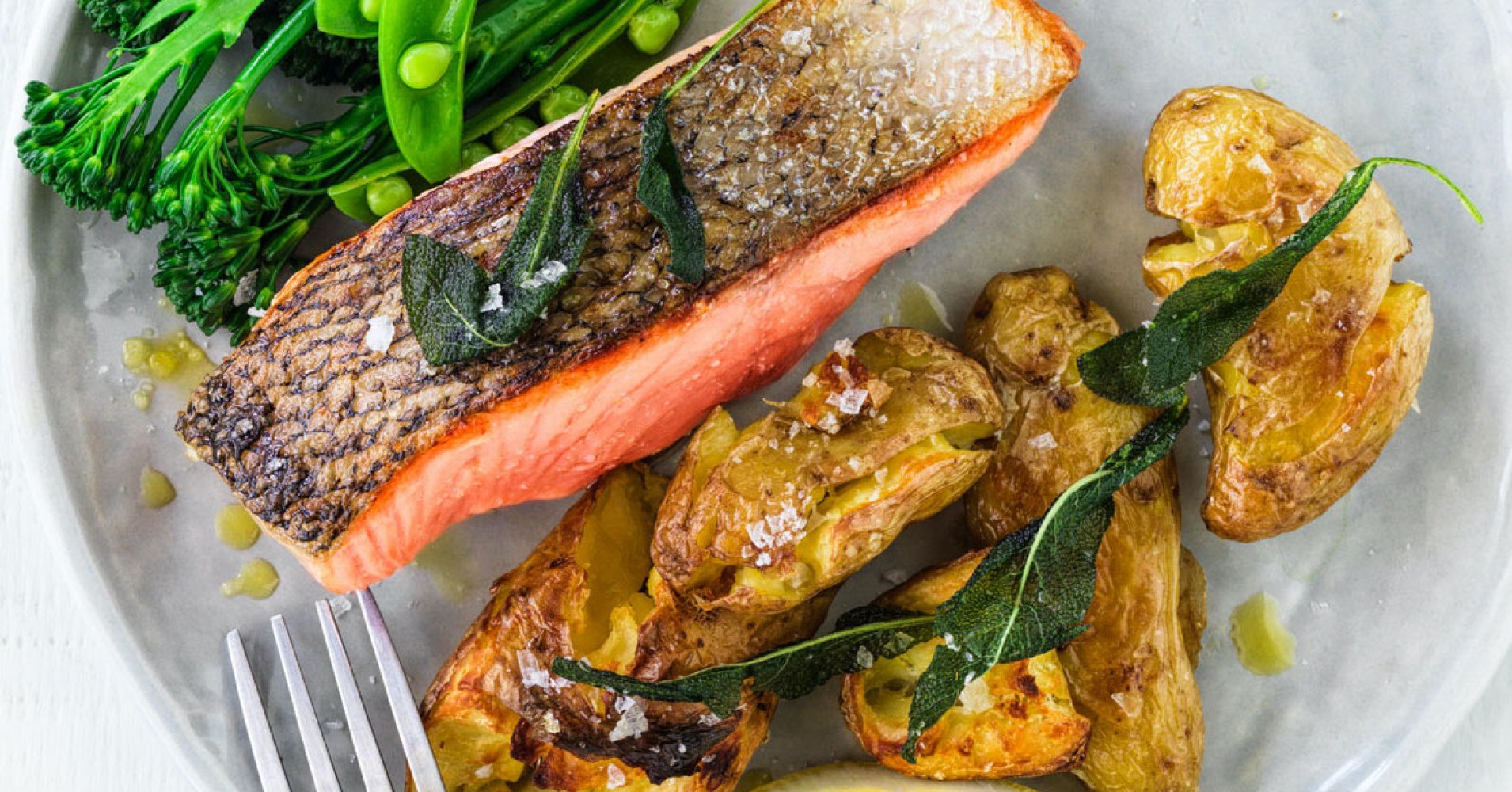
Description: Failing to allow the salmon to rest after cooking is a common oversight that can result in a less flavorful and less tender final dish.
Explanation:
Resting the salmon after cooking allows the juices to redistribute throughout the fish, resulting in a more tender and succulent texture. Additionally, resting allows the flavors to develop and intensify, resulting in a more delicious dining experience. However, many home cooks neglect this step, eager to serve the salmon immediately after cooking. Let’s delve deeper into why allowing the salmon to rest is important and how to do it properly.
Importance of Allowing the Salmon to Rest:
- Juice Redistribution: Allowing the salmon to rest after cooking gives the juices a chance to redistribute throughout the fish. This helps to ensure that each bite is moist and flavorful, rather than dry and unevenly cooked.
- Flavor Development: Resting allows the flavors of the salmon to develop and intensify, resulting in a more delicious and well-rounded dish. This extra time allows the seasonings and marinades to meld together, creating a harmonious flavor profile.
Tips for Allowing the Salmon to Rest:
- Cover with Foil: After removing the salmon from the heat source, cover it loosely with aluminum foil to keep it warm while it rests. This helps to retain heat and moisture, ensuring that the salmon remains tender and juicy.
- Rest for 5-10 Minutes: Allow the salmon to rest for 5-10 minutes before serving. This gives the juices ample time to redistribute throughout the fish, resulting in a more tender and flavorful final dish.
- Use a Warm Plate: If serving the salmon on a plate, warm the plate in the oven or microwave before adding the salmon. This helps to keep the salmon warm while it rests and prevents it from cooling too quickly.
- Avoid Cutting Immediately: Resist the temptation to cut into the salmon immediately after cooking. Cutting into the fish too soon can cause the juices to run out, resulting in a drier and less flavorful final dish.
Benefits of Allowing the Salmon to Rest:
- Improved Texture: Allowing the salmon to rest helps to ensure that it remains tender and moist throughout. This extra time allows the fish to relax, resulting in a more succulent texture.
- Enhanced Flavor: Resting allows the flavors of the salmon to develop and intensify, resulting in a more delicious and well-rounded dish. This extra time allows the seasonings and marinades to meld together, creating a harmonious flavor profile.
Conclusion
By avoiding these common mistakes, you can elevate your salmon cooking skills and create delicious, restaurant-quality dishes at home. Whether you’re a novice cook or a seasoned chef, mastering the art of cooking salmon is within reach with the right techniques and attention to detail. So the next time you prepare salmon for dinner, remember these tips to ensure a memorable dining experience for you and your guests.

